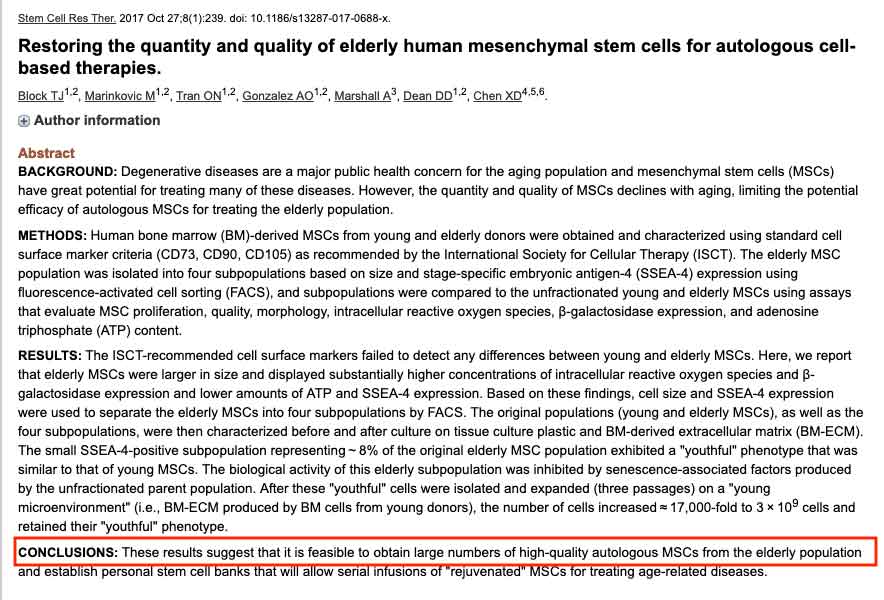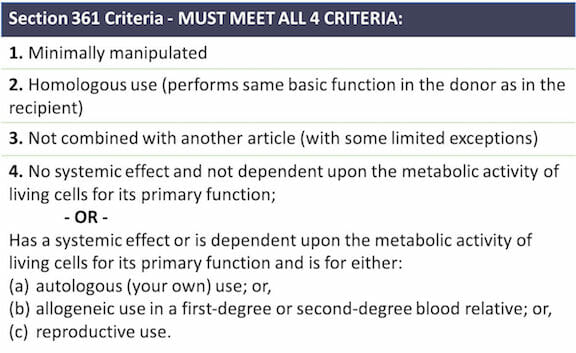There may be some pressure at the injection site, but the process is fairly quick. You will be giving a numbing agent to help maintain comfort during your treatment. Most patients say that the marrow draw was quite tolerable and would do it again. Here are a couple of our patients talking about the procedure:
One of the most common questions that people ask is “how much does Orthobiologic Therapy cost?”
These procedures are NOT covered by health insurance plans. But, with financing, many patients can get their painful joints and back treated for a minimum investment. There are a variety of different financing options available, and we can help you find the best one for you.
The total cost will depend on the:
Each patient’s medical requirement is unique and all our procedures are individualized just for you. Therefore a consultation with our Medical Director (over the phone or face-to-face) is needed to decide your best treatment option and to give you an estimate of the exact cost to you.
To see if you qualify for financing, click the logo below:
While the bone marrow draw only takes a few minutes, the total procedure may take up to 2 to 3 hours.
We know that larger numbers of cells do not translate into greater success. In 2012, a biologics company called Osiris presented evidence at the American Academy of Orthopedic Surgery that when 50 million cultured stem cells were injected into patients 20% of the patients reported less pain while when 100 million were injected 0% of the patients had less pain. A 2016 study showed that patients injected with 25 million had a positive outcome, while those injected with 50,75 or 150 million cells showed little response.
A lot of people are concerned about the reliability and safety of Orthobiologic procedures. Orthobiologic cell therapy is safe since your own cells are used. This minimizes the risk of problems or complications.
You will be sore and stiff after the injection which will last for a few days after treatment. After the numbness wears off, refrain from any activities that increase your discomfort, and refrain from taking anti-inflammatory medications for at least two weeks after treatment. Control your pain with acetaminophen (Tylenol) or medications that your doctor prescribes. Use ice for up to 20 minutes at a time every two to three hours.
Resume physical therapy regimen about 1 -2 weeks after treatment. Your recovery time will depend on the specific condition that is being treated. In all cases, the treatment will need time to be effective. You should notice a gradual improvement in your level of discomfort, and an increase in your range of motion.
Do not take over-the-counter medications that can thin your blood (aspirin, Motrin, Aleve Advil, Naproxen, etc.). Drink as much water as possible on the day of your injection. Arrange for someone to drive you home after treatment.
Patients may see a significant improvement in their symptoms. This may eliminate the need for more aggressive treatments such as long term medication or surgery or joint replacement, as well as a potential remarkable return of function.
Quite often we can, for a nominal cost.
After we inject cells, they go to work right away. They may continue the repair process for up to 1 year or longer. This does not mean that you have to wait for a year for pain relief. Typically patients feel pain relief in the first few weeks to months.
Certainly. None of our procedures impact your options to have surgery in the future, although we hope that won’t be needed.
You can return to most of your normal activities relatively quickly. Depending on where the cells were injected, you may feel some soreness or stiffness. Most patients have no difficulty returning to work within a week or 2.
Stem cells are “unspecialized” cells that can develop into another type of cell that is required to repair or replace damaged tissue. They are the body’s “repairmen.” We all have stem cells because our own cells are continually dying and being replaced with new cells. Stem cells are present in bone, fat and blood, but are concentrated mostly in the bone marrow, where blood cells are made. Bone marrow (hematopoietic) stem cells usually develop to form whole blood – red blood cells, white blood cells and platelets. However, in other parts of the body, when exposed to the right growth factors and signaled by neighboring cells, these stem cells can develop into other cells, such as bone, cartilage, tendon and ligaments and therefore, can “regenerate” body tissue. They can also reproduce to make more stem cells for more even healing.
Yes, according to a recent study1 “it is feasible to obtain large numbers of high-quality autologous (your own) MSCs (Mesenchymal Stem Cells) from the elderly population.”

1. Restoring the quantity and quality of elderly human mesenchymal stem cells for autologous cell-based therapies. Block TJ, Marinkovic M, Tran ON, Gonzalez AO, Marshall A, Dean DD, Chen XD, Stem Cell Res Ther. 2017 Oct 27;8(1):239. doi: 10.1186/s13287-017-0688-x. Link to Article
Autologous Stem Cells are your own stem cells and allowed by the FDA under Section 361.
Allogeneic Stem Cells are stem cells from another human being. They are severely restricted by the FDA and must go through a complex costly Section 351 “cell drug” registration. Currently, there are no live FDA approved Umbilical Cord or Amniotic or Placental stem cell products.
All of our procedures are allowed under Section 361 of the Public Health Service Act and the same day surgical exception. Section 361 criteria are as follows:
No. The quick summary is: Using live cord or live amniotic stem cells from another person or placenta is considered a cell-drug by the FDA and requires a full drug approval process. There are a few very FDA approved live stem cell products and these are only allowed for restricted use such as for bone marrow transplantation in severe end-stage cancer etc. The full list of approved products are here. None of these approved live cell products are allowed for orthopedic use.
The longer explanation is here: Live stem cells are allowed by the FDA under 2 registrations: Sections 351 and 361 of the Public Health Service Act which provides the authority for FDA to establish regulatory requirements for marketing traditional biologics and human cells, tissues, and cellular and tissue-based products. These two pathways differ markedly in terms of the time, effort and expense required to bring these products to market in the U.S.
One is the simple 361 exemption, and the other is the complex 351 cell-drug approval. All of the orthopedic amniotic and cord products on the market today have the simple 361 exemption, which, unlike a drug approval, requires no clinical trials or data.
What determines if the 351 cell-drug approval is needed? The claim of live cells. The FDA regulation says at 21 CFR 1271.1 at section 4 part 2 that if you claim that your cells are alive and have metabolic activity and they’re a donor tissue (from one person to another) that’s considered a drug so can’t go through the 361 tissue-registration system. It requires a 351 cell drug designation for FDA approval. Also, note that it’s simply the claim that makes the difference. The cells may really be dead and all that exists is the manufacturer claiming that they’re alive, but the claim is enough to trigger the regulation.
So why aren’t these companies following FDA stem cell regulations and just getting the proper 351 FDA approval for their live cord and live amniotic cells instead of playing word games with their marketing? The 351 cell-drug designation is a long, complex, and extremely expensive process. It can take hundreds of millions of dollars and 5–10 years of clinical trials to get a real FDA approval. If their product fails clinical tests they won’t get approval. So the simple online 361 tissue registration and clever wording is a better fit to their bottom line. The upshot? There is no FDA approved live amniotic or live cord blood product with an orthopedic indication on the market today. So if a chiropractor, doctor or sales rep tells you that they have one, beware, it’s not true.
The claim of live cells. The FDA regulation says at 21 CFR 1271.1 at section 4 part 2 that if you claim that your cells are alive and have metabolic activity and they’re a donor tissue (from one person to another) that’s considered a drug so can’t go through the 361 tissue-registration system. It requires a 351 cell drug designation for FDA approval.
Note that it’s simply the claim of live cells that makes the difference. The cells may really be dead and all that exists is the manufacturer claiming that they’re alive, but the claim is enough to trigger the regulation.
We do not offer any exosome or live cord products since they are not approved by the FDA. We only offer autologous products which we offer within the FDA Section 361 guidelines.
Exosomes are a product of lab cultured mesenchymal stem cells. According to recent FDA correspondence exosome, secretome, or Amniosome products are 351 biologics and need a full 351 cell drug registration.
No exosomes, amniosomes, secretomes or exosome products have current FDA approval.
The 351 cell-drug designation is a long, complex, and extremely expensive process. It can take hundreds of millions of dollars and 5–10 years of clinical trials to get a real FDA approval. If their product fails clinical tests they won’t get approval. So the simple online 361 tissue registration and clever wording is a better fit to their bottom line.
The upshot? There is no FDA approved live amniotic or live cord blood product with an orthopedic indication on the market today. So if a chiropractor, doctor or sales rep tells you that they have one, beware, it’s not true.
All of our procedures are allowed under Section 361 of the Public Health Service Act or the same day surgical exception, so we don’t need a new drug application. Section 361 criteria are as follows:
All new drugs that are licensed by the FDA go through an FDA application process called an IND which stands for Investigational New Drug Application or an NDA which stands for New Drug Application. Since our procedures fall under Section 361 and/or the same day surgical exception, we do not need to register them as a new drug and so we do not need an FDA drug application (IND or NDA.)
We treat the following conditions:
KNEE PAIN
HIP / THIGH PAIN
SHOULDER PAIN
ANKLE / FOOT PAIN
ELBOW PAIN
SPINE / BACK PAIN
TENDON / MUSCLE PAIN
WRIST / HAND PAIN
We only treat orthopedic joint, muscle and tendon problems where we feel that the medical studies are solid and compelling and within FDA regulations and guidelines.
We do not treat:
If bone marrow cells are to be utilized and a patient had a history of a bone marrow derived type of cancer (i.e. lymphoma), this would be considered a relative contra-indication. However, many times those patients can utilize PRP injections but the ultimate decision maker should be their oncologist.
There are many research studies show that cellular therapy and platelet rich plasma injections may provide excellent relief from joint and musculoskeletal pain and ongoing inflammation.
IMPORTANT! This information is for educational purposes only and is NOT intended to replace the care or advice given by your physician. Boston Applied Biologics is not offering regenerative cell therapy or other regenerative therapies as a cure for any condition, disease, or injury. No statements or implied treatments on this website have been evaluated or approved by the FDA. This website contains no medical advice. All statements and opinions provided by this website are provided for educational and informational purposes only and we do not diagnose or treat via this website or via telephone. We do not claim that any applications, or potential applications, using autologous regenerative cells and other regenerative cells are approved by the FDA, or are even effective. We do not claim that these treatments work for any listed nor unlisted condition, intended or implied. Always seek the advice of your physician or other qualified health provider before starting any new treatment or with any questions you may have regarding a medical condition. For more information see our Medical Disclaimer.
Copyright © 2025 Boston Applied Biologics, LLC. All Rights Reserved.

How Orthobiologic Therapy can relieve your joint, muscle and tendon pain without surgery so that you can get back to enjoying your life*
We are committed to your privacy. Boston Applied Biologics uses the information you provide us to contact you about relevant content, products, and services. By providing us with your information you are consenting to the collection and use of your information in accordance with our Terms of Service and Privacy Policy. You may unsubscribe from these communications at any time.